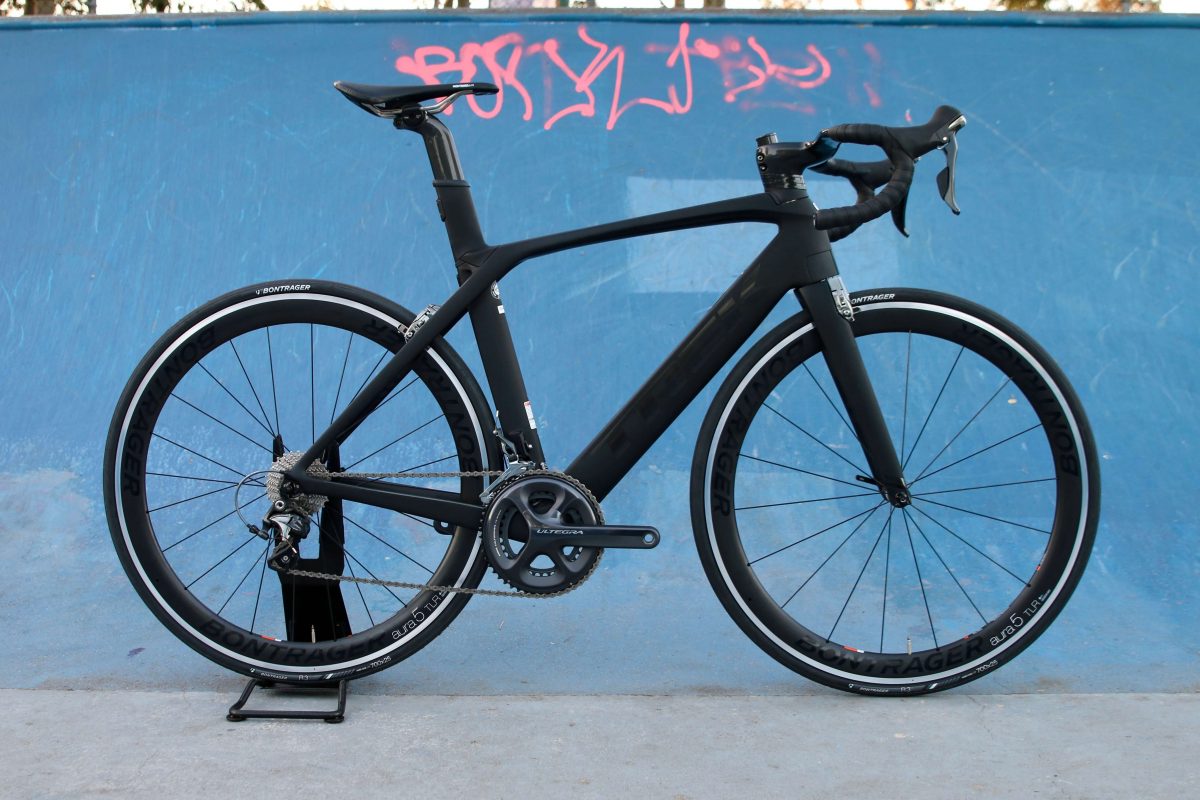
In this article and video I will provide a comprehensive overview of the Trek Madone, including its ten unique, and rather technical frameset characteristics. Having taken this machine out for a full day – riding both solo and in a fast bunch ride during blustery Melbourne conditions – I’ll go into details about the aerodynamic traits of the 2018 Trek Madone and how one of the world’s biggest bicycle manufacturers has been able to curve the comfort conundrum that has traditionally gone hand-in-hand with aero race bikes.
Watch the video:
But before we go deep together on Trek’s “benchmark platform for racing bikes”, let me tell you a little story.
It’s about my history with aerodynamic race bikes.
It was 2012.
I’d seen my local bike shop relentlessly post images of the newish Specialized aerodynamic race machine – the Venge – all over their social media accounts.
At the time my bike was less than 12months old. I didn’t need a new one. Far from it.
However, the relentless images of the Specialized Venge popping up onto my social feeds was hypnotic.
After many weeks of social media torment, I rushed into my local shop and placed an order in for the 2013 model S-Works Venge (Tom Boonen special edition).
It was the most eye-catching machine I had ever ridden. It was incredibly fast too. Especially for the criteriums.
But hit a bump or divot in the road and you’d be riding the thing like it was a raging bull. Additionally, when the wind was blowing across the bike, you’d definitely encounter that blustery feeling you get with deep dish carbon wheels, but only this time within the body of the bike – the frameset.
By mid 2013 and I joined a cycling team. The beginning of what is now NRS team InForm Make. I started training hard, riding in the hills often, and thus, on plenty of rough country terrain.
I sold my Venge after less than 12 months of use. It was no longer practical for the type of training I was doing.
While it was fast and sexy, I couldn’t deal with the fatigue this bike was inflicting into my body.
Since my Venge experience I have never contemplated another aero purchase. Nor even had a desire to ride a roadie from within a brand’s aerodynamic fleet.
So after getting a phone call from local Bike Chaser dealer Omara Cycles, I contemplated – would the Madone leave my rear bruised and battered like the Venge once did?
I was about to find out.
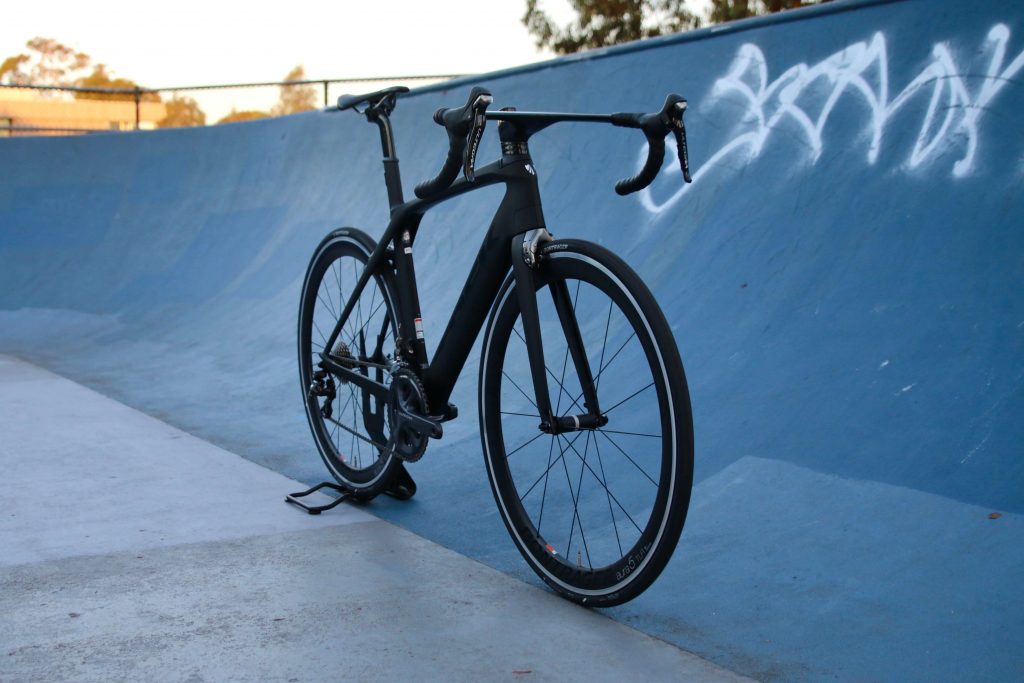
The Trek Madone 9 Series Frameset
If you read Trek’s website from page to page – like I did – you will soon discover the word ‘aerospace’ dropped a number of times.
Why?
The word oozes precision engineering and pioneering technology.
And to be fair, Trek’s wind tunnel testing on the Madone framesets is facilitated in the same wind tunnels used by aerospace organisations in the United States!
It’s perhaps no coincidence then, that when you stare at the Madone it looks like it’s something from outer space. Almost like it will take off when you hit a certain speed.
In fact, Trek and it’s engineering department have been so meticulous with wind tunnels and aerodynamics that the bottle placement was apparently exposed to circa 140 iterations before they concluded which position was best for wind gains. Trek even claims that the Madone is more aerodynamic with bottles than without.
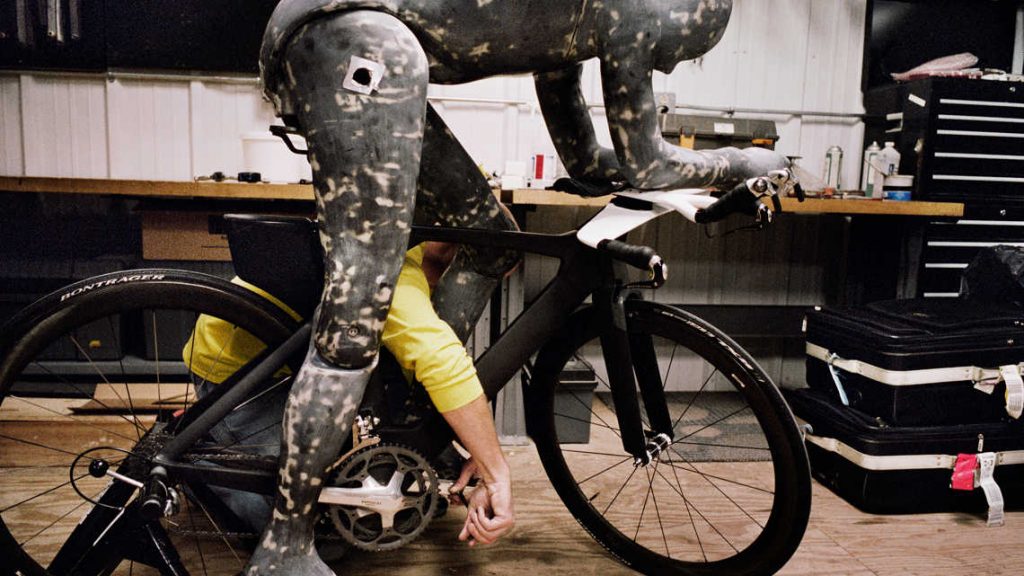
The frame itself is solid, gurthy and above all else – seamless.
What do I mean by seamless?
For starters, Trek use ‘invisible cable routing’ to hide all cables.
While I don’t build bikes personally – and never intend to – apparently this is quite a finicky feature for the mechanic to build and maintain, but super pleasing aesthetically to the beholder.
Additionally, the brakes are fully integrated into the bike, where the internal cable routing to the front brakes – in addition Trek’s desired headtube shape – has provoked the need for ‘vector wings’, where small compartments open up like wings on the headtube to accommodate Trek’s desired ‘aero in mind’ engineering.
Additionally, Government regulations say that a bikes front wheel rotation must be able to turn up to 65 degrees (from it’s centre position).
The carbon fibre layup is what Trek call their 600 series OCLV. An acronym for Optimum Compaction Low Vid. There’s a mouthful for you!
In laymen’s terms this is the ‘patented’ process Trek use by compressing / moulding the carbon, and the way Trek space (or ‘void’) the layers of carbon fibre within each frame.
By minimising the space between carbon layers; this is ultimately considered better engineered for a stronger, stiffer, and better performing machine. And by all accounts Trek’s standards ‘exceed aerospace (there’s that word again) standards’ in relation to the number of voids in its material.
Lastly, the shape of the overall tubing is what Trek call KVF (Kammtail Virtual Foil), that offers a unique design which apparently promotes a lighter, stiffer, and better wind dismantling platform.
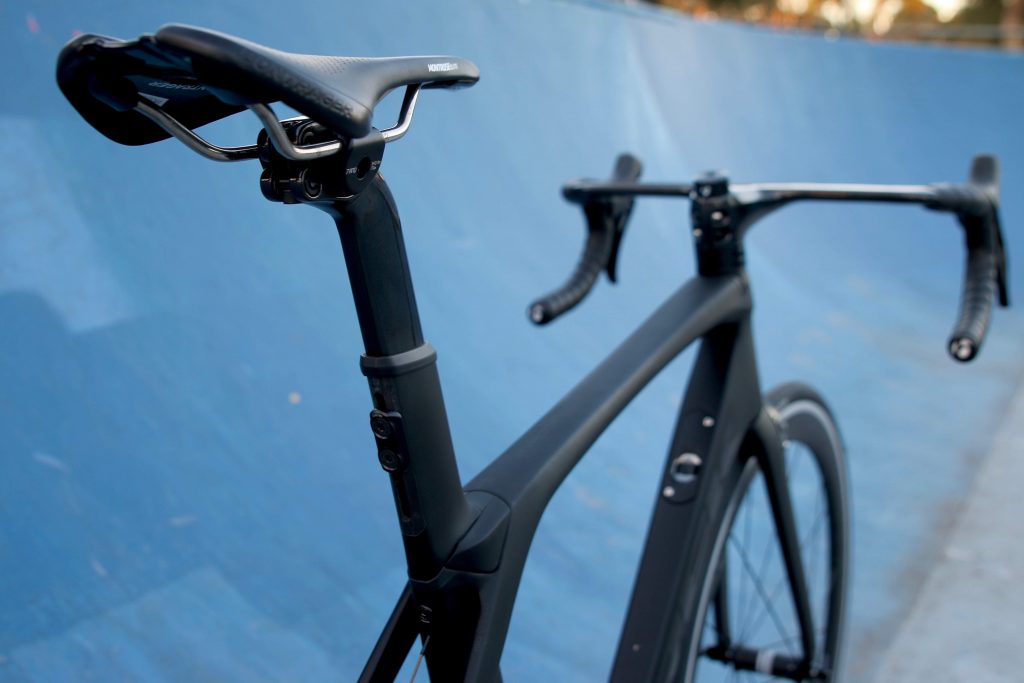
Dealing with the Cross winds?
I’d like to dig a little deeper into this tubing methodology Trek call KVF.
Reason being, this is one area that the Trek Madone really surprised me while riding. Particularly given my previous Specialized Venge experience I mentioned above.
When test riding the Madone, I joined a very well-known bunch ride here in Melbourne called North Road Ride.
For half of this ride you’re hammering down a beach road, where often winds will be ripping off Melbourne’s notorious bay. And on this particular day I had a massive crosswind blowing, with the occasional tail or head wind where the roads curve inwards and outwards on the occasion.
This was the ultimate aerodynamic acid test, in my mind.
The Madone’s ability to comply with varying wind conditions – how would it react? I pondered.
Exceptionally well.
I can’t deny it of that.
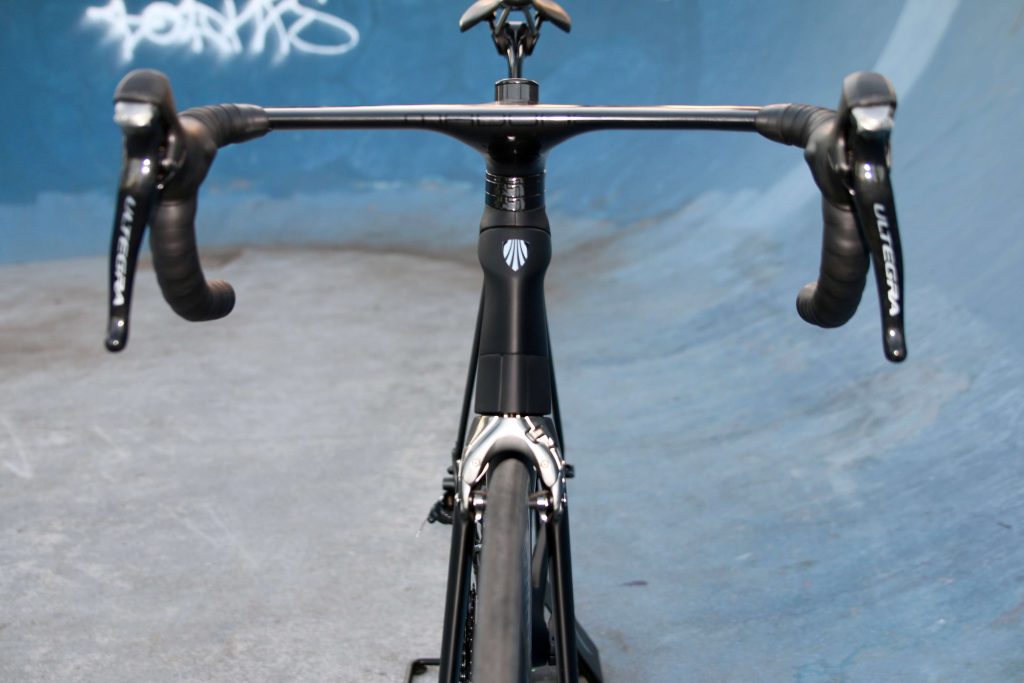
The KVF ‘unconventional aerodynamic shape’ has employed something called ‘airfoils’ – for an explanation on this design why not link through to the National Aeronautics and Space Administration.
Put simply:
The design has all possible wind conditions in mind, including the crosswind.
It delineates from the traditional teardrop shape design focusing more on a unique truncated-tail design. This design methodology ‘adds stability in crosswinds’, and was certainly what I felt while being hammered with Melbourne’s ripping bay winds.
Interestingly, this stability also provides a more comfortable rhythm to the ride and subconsciously made the overall ride quality feel a lot more subtle. Trek also say that this engineering style offers additional vertical compliance to the Madone, which I wouldn’t argue with based on my experiences.
Check out the Trek Madone on Bike Chaser
The Comfort Factor with IsoSpeed
While I’m on the topic of ‘surprising’ ride qualities, let’s delve into comfort.
Once again, my previous Specialized Venge experience from 2013 had left me questioning the comfort of this machine before I even laid eyes on it.
If I hit a pothole, would I end up in a tree?
Before I give you my answer, let’s make sure we’re all singing from the same hymn sheet and living in the same comfort paradigm.
When I say ‘comfort’ we’re talking in the realms of aerodynamic race machines.
Comfortable road bikes as a whole; the Madone may squeeze into some consideration, but it would have nothing on the Trek Domane or the Specialized Roubaix.
But aerodynamic bred race machine comfort? The Madone is worthy of a big shout out.
Before I road tested the Madone, I purposely did not look up its credentials. At all. I didn’t want to be distracted by what other people say or what Trek write on their very own website.
I wanted to let the bike do the talking first.
While you can still feel the Madone kick up slightly over the more pronounced bumps and divots, the frames ability to absorb the shock from road discrepancies was perhaps the most surprising effect with the Madone when it comes to comfort.
While developing the new Madone model, which was launched in mid 2015 as part of their new 2016 range, the Trek engineers stole something called their ‘IsoSpeed’ feature from the Domane.
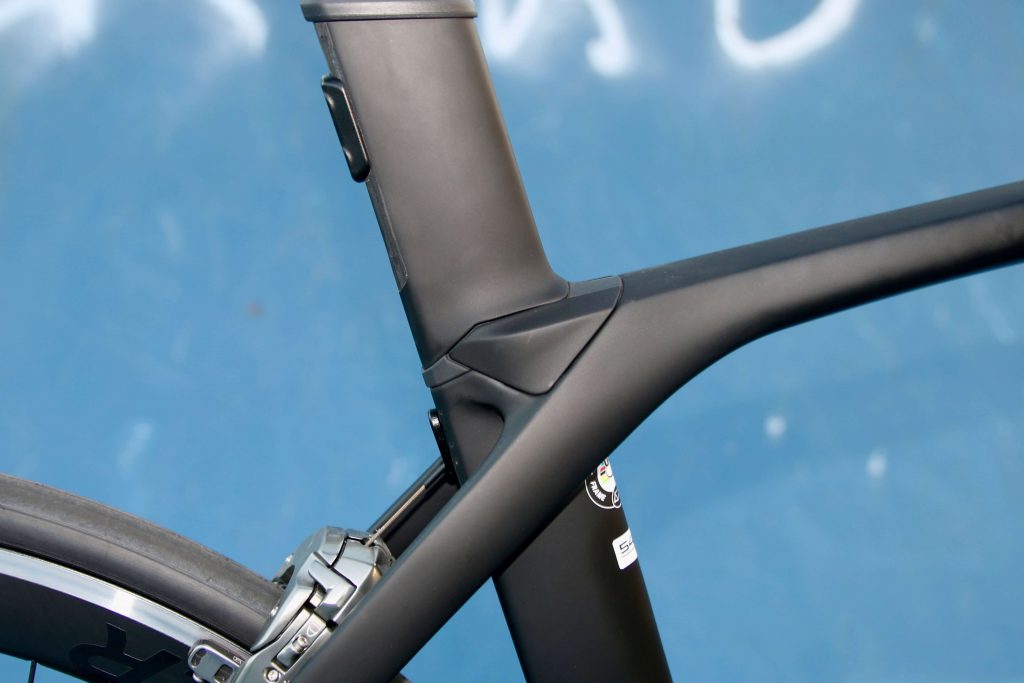
This IsoSpeed technology was actually developed in partnership between Trek engineers and one of my favourite riders of all time – Fabian Cancellara. One of the world’s most successful Classics riders, and a human weapon that could go off the front like no other.
So if Fabian says it works – and by all accounts he’s a raving fan – then it works! No question.
Essentially what this mechanism does is that it allows the seat tube to flex with the forces of the road. The result is a Madone that moves with the road while maintaining the feel and efficiency of the traditional race bike design.
After my 100 km ride on the Madone, I returned feeling fresh and uninhibited by the sensation of fatigue throughout the body. A common occurrence for unforgiving road bikes that transfer copious amounts of road shock into the body, leaving you less inclined to ride for hours on end. Not an ideal scenario for any recreational rider out there.
Additionally, John Degenkolb of Trek–Segafredo.-winner of the Milan San Remo and Paris Roubaix – recently rode his custom Madone at the cobble infected Four of Flanders. Some of his teammates also joined him, which perhaps speaks most highy on the shock absorbing credentials of this Trek Madone.
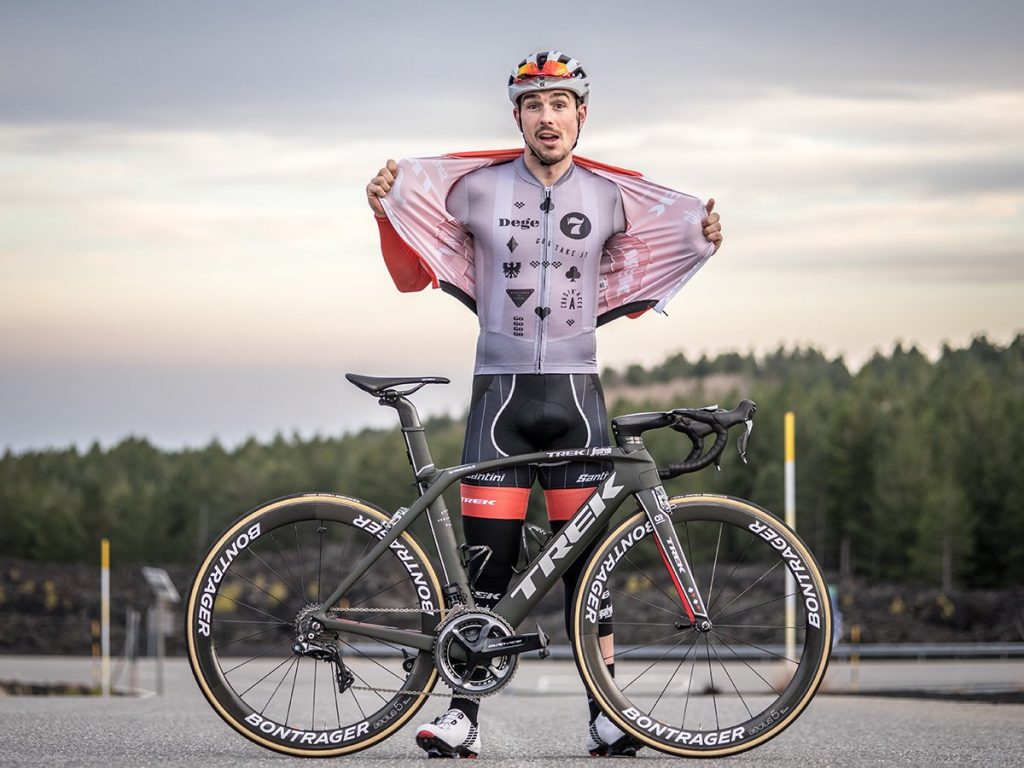
The Integrated Systems [& why I couldn’t stop staring]
If I am to be critical on this bike:
From the research I have done and the conversation I’ve had with Jae Omara (Owner of Trek dealer Omara Cycles) – the bike is technical.
Why do I mean by technical?
For example, Jae says it takes his mechanics half a day to put one of these machines together. He’s also had customers try and adjust the brakes – which is typically a quick hand job on a normal road bike – only to turn the whole braking system into a mess.
But put more simply, just listing all the ‘features’ Trek describe on their website should be enough for any logical thinker to start understand what Jae and I are talking about. Here’s some features to contemplate:
- Madone IsoSpeed – Technical
- Vector Wings – Technical
- Integrated Madone Brakes – Technical
- Invisible Cable Routing – Technical
- Blendr compatible stem – Technical
- Project One paint job – Optional but Technical
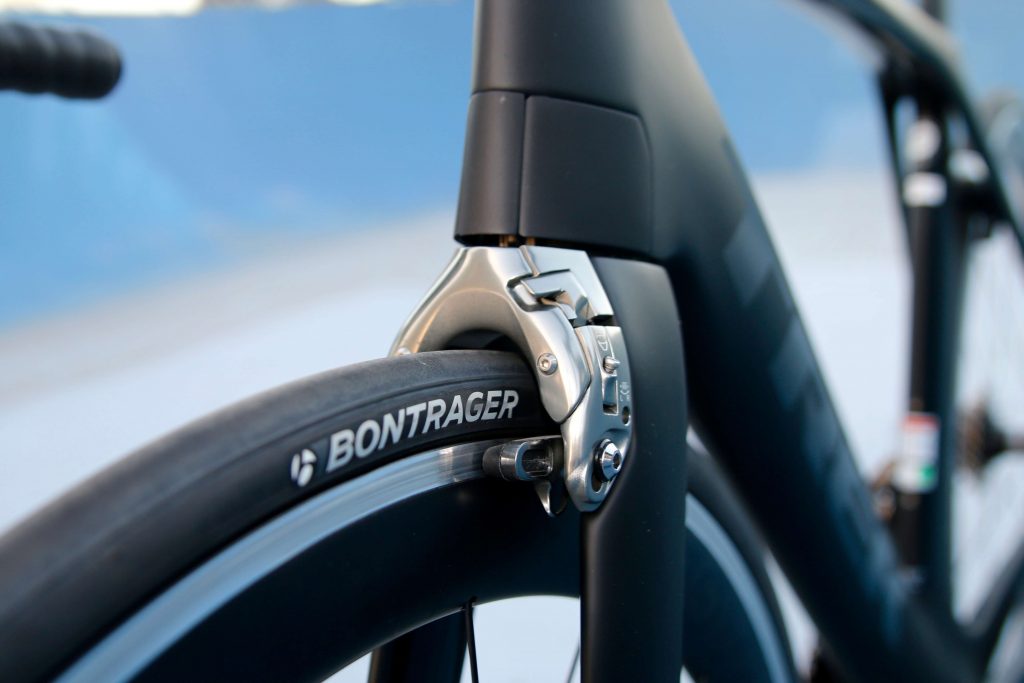
Jae admits that he gets many prospective customers into his store frothing over the Trek Madone, although he’s quick to run through a sequence of questions to ensure this is the right bike for them.
While the technical features of the bike can be managed by your local bike store, it’s not going to be your best bike for traveling with, nor is it an ideal system for the regular Joe Blow who likes to have a tinker.
But if you’re looking for speed and a sleek looking machine – really like no other – then you should be all over this bike.
In fact, after my test ride I brought it into my house and had it sitting next to me while I was working. It was immensely distracting.
I couldn’t stop staring at the thing.
The aerospace synergies really are relevant because it does feel like something that has been built with elite engineering.
However, with a meticulously integrated system – from the handlebars to the rear brakes – it’s important to consider the additional componentry items when having this machine on your contemplation list…
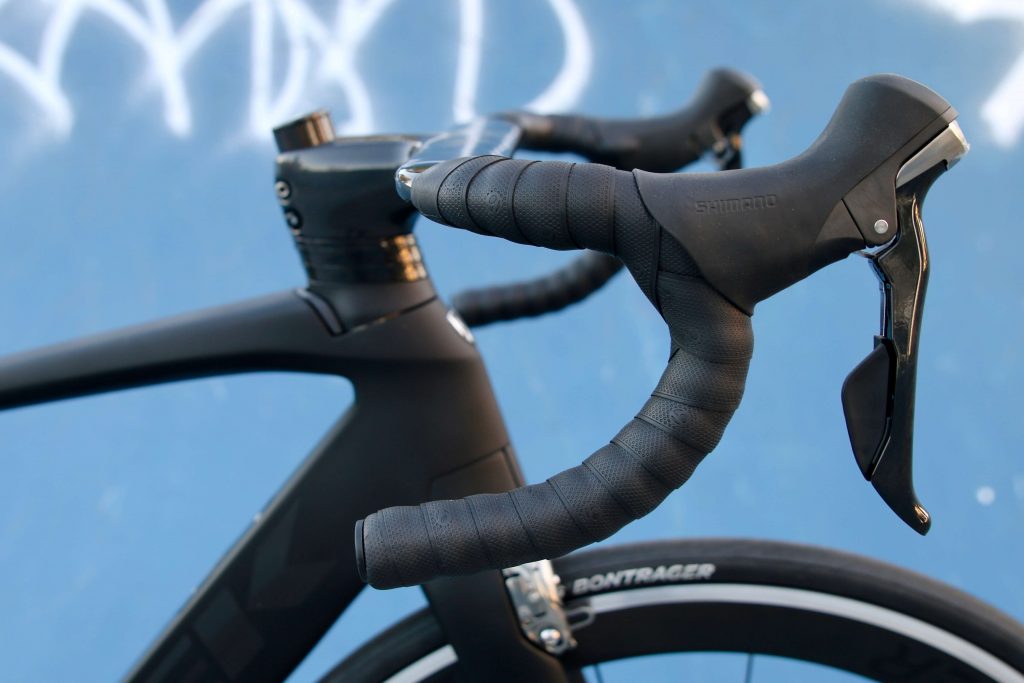
Blendr Integration, Tyre Width, & Junction Box
Continuing on from the integrated feel, the unique shape of the handle bars means that standard computer attachments and front lights that would typically wrap around your handlebar will have to be placed in that box of ‘extra’ cycling gear you have in your garage.
Trek offer their own products to add-on the bits and pieces you’ll need for the handlebar, and they also offer a seamless light attachment for the rear seat post, which Trek call their ‘micro-adjust seatmast’. An aero shaped seat post essentially.
Once again, the seat mast is another non-standard apparatus that comes with different seat post lengths, depending on the riders height.
I actually got stung here, taking the bike from Oamra Cycles arrogantly saying, ‘I can adjust the seat height when I get home’.
20minutes later I was calling them asking why the seat won’t go any higher?
15 minutes later I was back instore getting the correct seat post length inserted!
The Madone allows up to 28 mm tyre width, and you wouldn’t want to go more than that on an aerodynamic race machine anyway. It’s not your gravel adventure bike.
Lastly, the junction box or barrel adjustment (depending if you’re riding electronic or mechanical) sits neatly on the down tube, easily accessible for the rider.
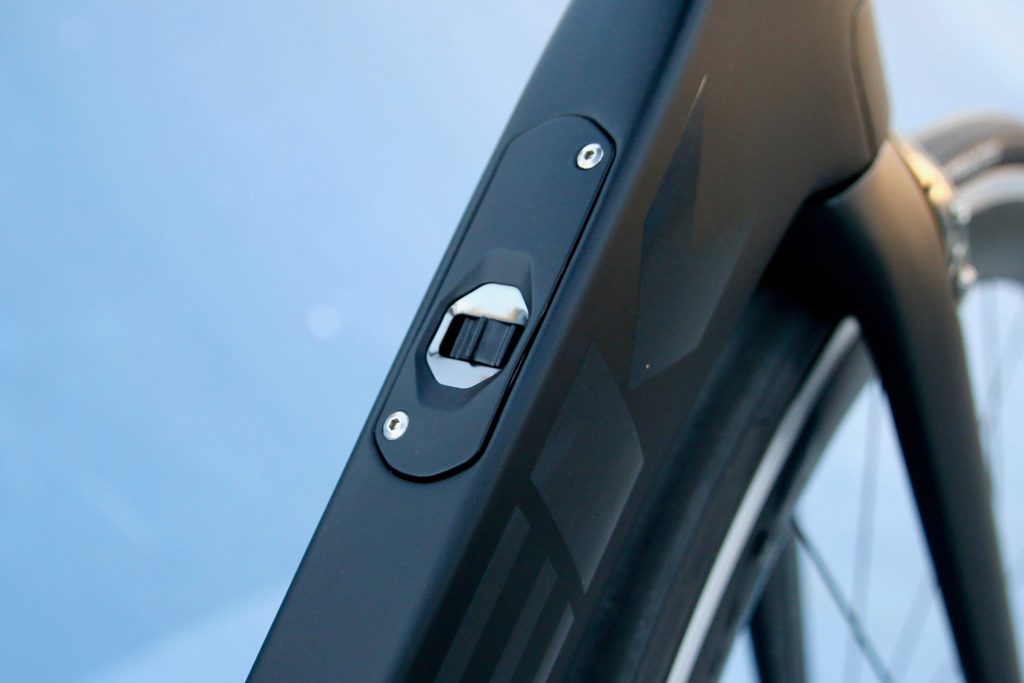
The Conclusion is Easy…
If you live in a relatively flat part of the world; you like super-speed, and you’re not adverse to managing the needs of a technical machine, then put this bike at the top of your list.
For a race machine that’s deigned to role fast, it was surprisely comfortable, and its seamless integrated look makes it a sure standout at the local café.
Trek say the “Madone is the ultimate fusion of power, aerodynamics, ride quality and integration”. I’d have to concur.





Thanks for this review. I have been researching this bike for some time and your points on comfort were very interesting.
Thanks Jerry, appreciate the comment. Glad to hear this piece was of use.
A really great review ! I rode a Trek Domane with front & rear Isospeed decouplers in an event that had both dirt / gravel and sealed sectors. Isospeed is a legitimate comfort feature and does everything that Trek claims it does. Another of my bikes is a 2017 Di2 equipped Merida Reacto (‘Aero bike’), also with their built in comfort features, which also work well in the comfort / aero scenario. Comparing the Merida against the Trek Madone, if I was in the market for a new bike I would side with the Merida simply for practical reasons. The issues you raised regarding the highly technical aspects of the Madone put me off it. If it was to be my only bike, I could not justify the expense.
Thanks Tim, appreciate the comment! Interesting to hear your comparison there and what you’re saying certainly makes sense to me. Cam
I’ve had one of these for 2 years after crashing my previous Domane. All of the above is very accurate and matches my experience. I’ve had a tough time with the brakes and Most of the extraneous accessories like lights etc BUT when it is up and going it is an awesome piece of kit! Apparently the Disc version will be out soon.
Thanks for sharing your experiences with the Trek Madone Alan! Glad to hear they align to the words written above. Cam
Great review. Especially since I currently have my own John Degenkolb Chasing Aces currently getting built up after a 10 week wait.
Thanks Karen, much appreciated. I am slightly envious of that! Enjoy your new machine. #frothing
Great review. In your Venge vs. Tarmac review you said if you had to choose between the two you’d go with the Tarmac for the comfort. How would you answer Madone vs. Tarmac? Is it comfortable (enough?!) ?